Naturally Grown Raw Material
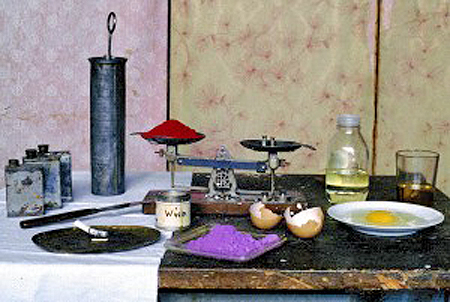 The organic materials such as egg, casein, linseed and poppy oil, animal glue, gum Arabic, resin of cherry tree, larch turpentine, fossil resin, and various earth pigments are extremely important to the warmth and natural luminosity of Vietinghoff's works. Though, he still needed some inorganic pigments. The red of poppy and the blue of flax flowers still seem to live in his paintings as well as the golden color of the larch trees in fall. These primitive ingredients were his logical working materials as they were adequate for his timeless subjects, offered by nature as well as his natural view.
The organic materials such as egg, casein, linseed and poppy oil, animal glue, gum Arabic, resin of cherry tree, larch turpentine, fossil resin, and various earth pigments are extremely important to the warmth and natural luminosity of Vietinghoff's works. Though, he still needed some inorganic pigments. The red of poppy and the blue of flax flowers still seem to live in his paintings as well as the golden color of the larch trees in fall. These primitive ingredients were his logical working materials as they were adequate for his timeless subjects, offered by nature as well as his natural view. 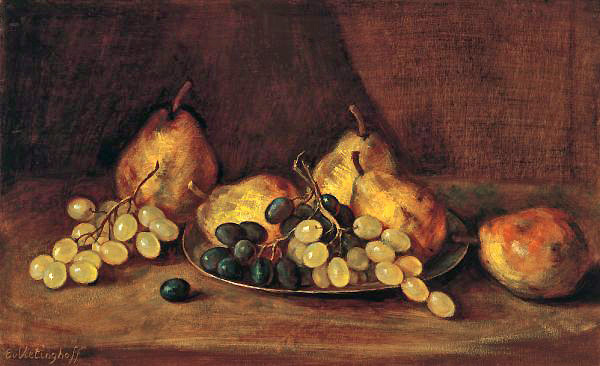 Intention, materials, technique, form and content were building a multiple interaction. His artistic imagination was focused on motifs of nature which he approached in a spontaneous manner, like a child, unencumbered by acquired knowledge, according to his method of the "School of Pure Vision" (look at this chapter).
Intention, materials, technique, form and content were building a multiple interaction. His artistic imagination was focused on motifs of nature which he approached in a spontaneous manner, like a child, unencumbered by acquired knowledge, according to his method of the "School of Pure Vision" (look at this chapter). Thereby, a vision of colors and light emerged, where the real subject itself was only the trigger of the vision and lost its physical importance.
 Vietinghoff painted the subject after it was transformed into a vision; he showed the "drama of color, form and light", as he called it, in his mind's eyes and not the real object in front of his physical eyes. Light and color is always connected with an object, except in the fraction of light by glass, crystal or rainbow, for instance.
Vietinghoff painted the subject after it was transformed into a vision; he showed the "drama of color, form and light", as he called it, in his mind's eyes and not the real object in front of his physical eyes. Light and color is always connected with an object, except in the fraction of light by glass, crystal or rainbow, for instance.Therefore, by the transmission of a visual experience – even one which occurs in the mind’s eyes – the subject emerges by itself on the canvas, if the perception of the colors is related to forms of real objects, without intellectual or artificial abstraction. The beholder's eye automatically reconstructs the elements of shapes and colors into the original object and recognizes the artist’s model. In this kind of creation, the artistic act in this is not to produce a copy but to capture the essential of the object in a kind of meditation and the fantasy of the realization of the color vision.
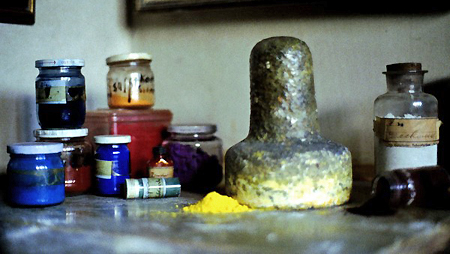 For this artistic metamorphosis of perception of nature, Vietinghoff had to be dependent on materials of the best quality. Somehow, the preoccupation with the natural materials has an "ecological" aspect, at least in a larger sense and more or less unconsciously.
For this artistic metamorphosis of perception of nature, Vietinghoff had to be dependent on materials of the best quality. Somehow, the preoccupation with the natural materials has an "ecological" aspect, at least in a larger sense and more or less unconsciously.In his times it became fashion to create with other, even exotic materials, while he was interested in the original on several levels. As a thrifty man, he used even small quantities of substances difficult to purchase. In addition, the oil of a plant, for instance, has to be produced from completely ripe seeds without traces of mold, from the first cold squeeze, and must not be extracted in a chemical process.
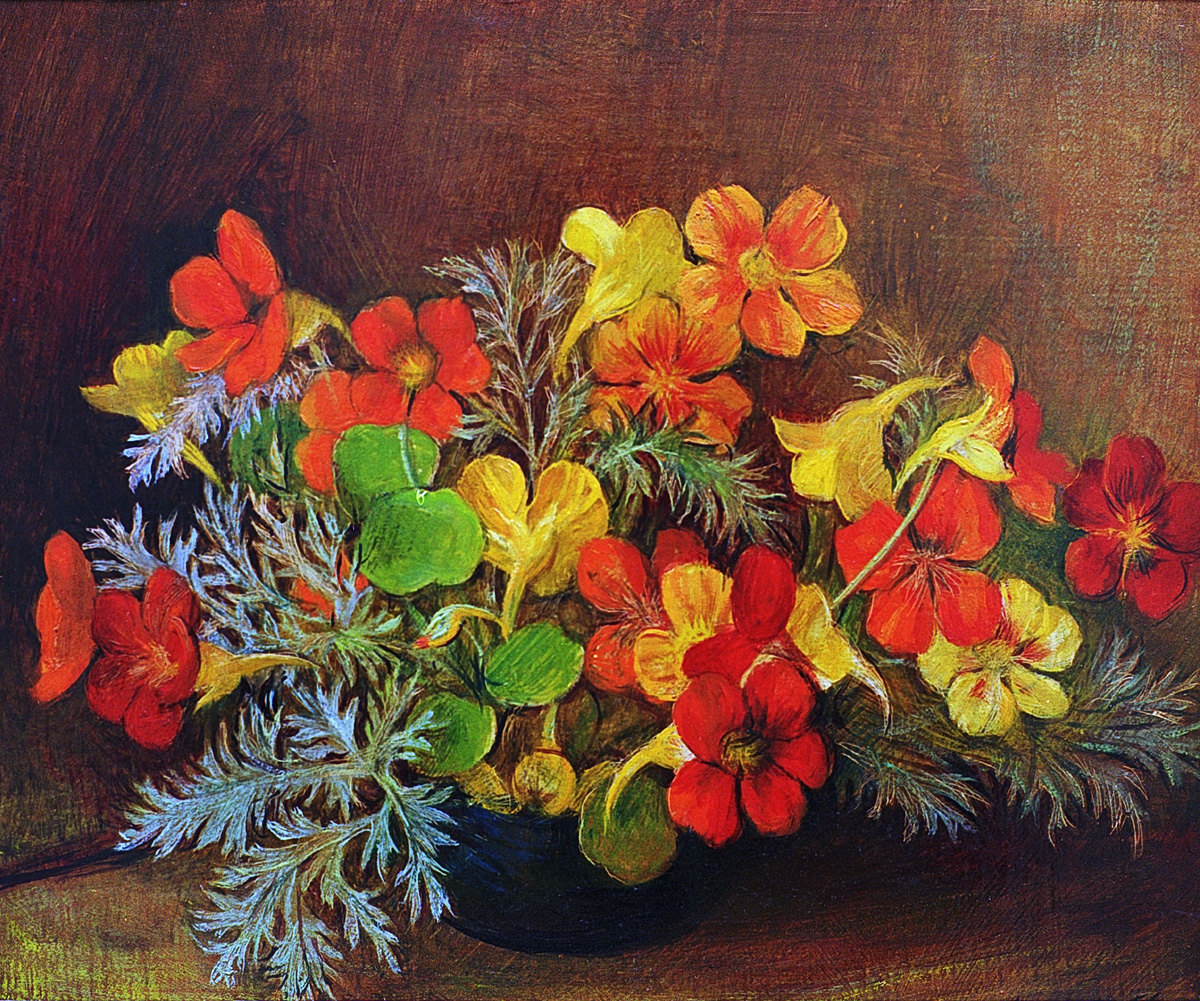 Vegetable oils should neither be blended with mineral nor whale nor fish oil. The properties of the oil change, if the seeds are bad, the treatment was wrong, chemical contamination pollute them, they were stored inappropriately or adulteration with cheap surrogates occurred.
Vegetable oils should neither be blended with mineral nor whale nor fish oil. The properties of the oil change, if the seeds are bad, the treatment was wrong, chemical contamination pollute them, they were stored inappropriately or adulteration with cheap surrogates occurred. In such cases, the oil gets cloudy, dark, glutinous or sticky and will not dry or becomes yellowed. Like most fast produced industrial products, they are cheaper but useless to Vietinghoff's art.
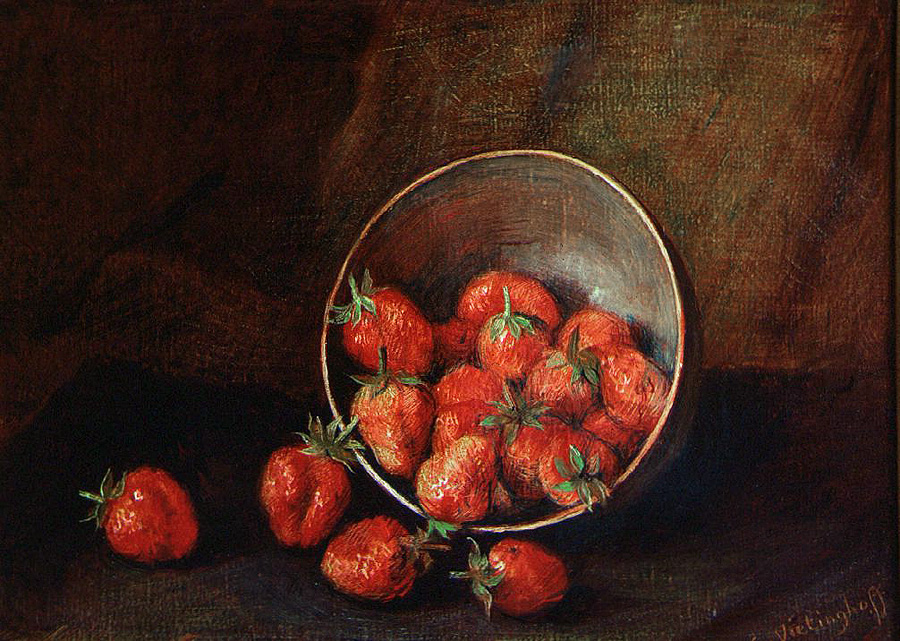 His dispensing from raw materials is essential for the final impression of his paintings, works resulting from nature. Craftsmanship and artistic intention harmonize together to produce real pieces of art.
His dispensing from raw materials is essential for the final impression of his paintings, works resulting from nature. Craftsmanship and artistic intention harmonize together to produce real pieces of art. With his whole personality, Vietinghoff showed complete commitment to the synthesis of spirit and material. His life was like "Pray and Work" applied from transcending insights into nature to the mastery of the materials from nature which allowed him to represent these insights.
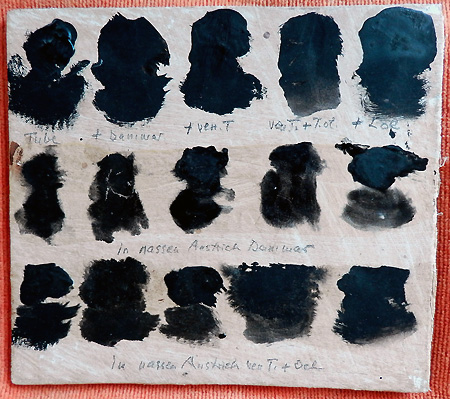 Periodically he struggled with inadequate materials and faced setbacks in his experiments and production of paints and binders.
Periodically he struggled with inadequate materials and faced setbacks in his experiments and production of paints and binders. One of the chronic problems was how to procure the irreplaceable white lead in high quality, one of the most important pigments for his way of painting.
Mainly, he got it in Paris where he travelled yearly till the 1970s. When desperate, he asked relatives and friends to find it in other metropolises, and sometimes he got the remainders of different natural material during his trips.
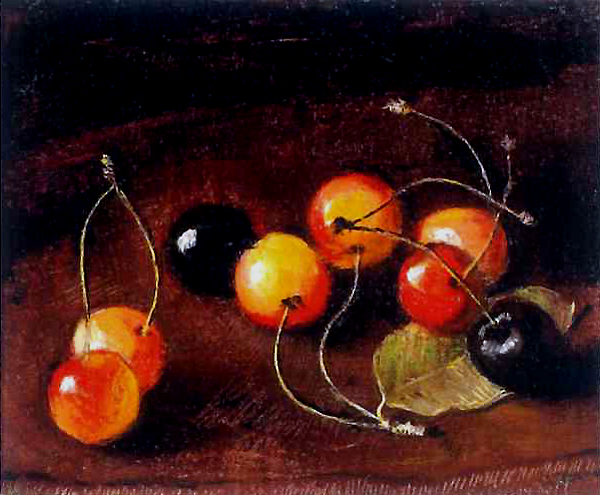 It was increasingly hard to find a glue which did not get brittle. Finally he found natural Venetian turpentine in Vienna and he balanced the new materials with the other ingredients, found the dispensing and tested the effect on paintings. Unfortunately, sometimes the quality then deteriorated for the purpose of cheaper production. Or even worse: the supply of some materials was stopped due to a lack of demand. Who else was still in need of such a quality? Who else had this requirement in a period of euphoric syntheticizing and growing mass consumption? These were times when artists began to create with acrylic paints and spray guns.
It was increasingly hard to find a glue which did not get brittle. Finally he found natural Venetian turpentine in Vienna and he balanced the new materials with the other ingredients, found the dispensing and tested the effect on paintings. Unfortunately, sometimes the quality then deteriorated for the purpose of cheaper production. Or even worse: the supply of some materials was stopped due to a lack of demand. Who else was still in need of such a quality? Who else had this requirement in a period of euphoric syntheticizing and growing mass consumption? These were times when artists began to create with acrylic paints and spray guns. (Over the past few years, it seems there is a kind of return to past values and the quality of some materials is improving again.)